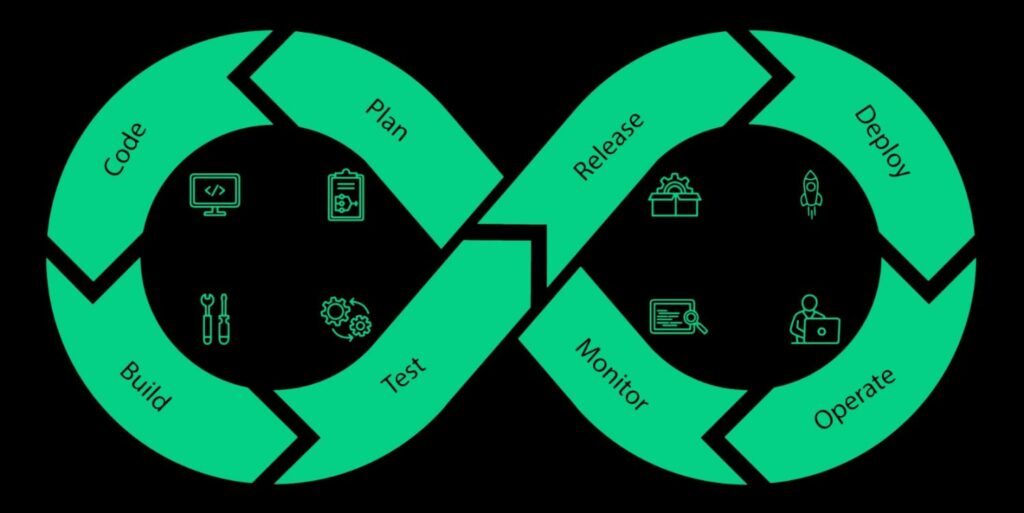Every mobile app testing team benefits from using a CI/CD checklist.
The intertwined concepts of continuous integration (CI) and continuous delivery (CD) have paved the way for faster, more efficient mobile app development and optimization techniques. Both CI and CD facilitate streamlined testing, coding, deployment, and other improvements, thereby enabling DevOps teams to better serve their clients and end users.
However, before developers can reap the benefits of CI/CD practices, they must implement the two strategies into their development processes. Doing so can be somewhat challenging, especially for DevOps teams that are unfamiliar with the CI/CD pipeline.
In an effort to help simplify that process, we’ve created an easy-to-follow CI/CD checklist that DevOps professionals can leverage to adopt continuous integration and continuous delivery development processes.
What is the CI/CD pipeline?
The CI/CD pipeline is an agile DevOps workflow. In other words, the pipeline is a workflow that prioritizes the frequent delivery and integration of new code to optimize app development. It does not rely on a linear workflow, which means it empowers DevOps teams to collaborate more effectively. They can write code, integrate updates, and conduct tests in real-time, thereby reducing costs and condensing development timetables.
Like with any workflow, the CI/CD methodology has its share of benefits and potential drawbacks, but you can maximize the efficacy of the CI/CD pipeline by embracing one of its key tenets, automated mobile app testing.
An automated testing solution serves as an incredibly valuable layer of quality control during development sprints or scrums, and DevOps teams can use the insights from these testing tools to ensure that each update effectively integrates with existing code. They can also use automated testing to preserve and optimize app performance, which leads to an enhanced user experience.
Implement better testing with this CI/CD checklist
The CI/CD pipeline offers distinct benefits over traditional mobile app development methodologies, and if your team is ready to explore those benefits, we suggest that you leverage our CI/CD checklist, which is generalized so that it can be adopted by virtually any mobile app development team. Therefore, we recommend adapting it to the unique needs of your organization.
With that said, let’s get into the list, which includes the following steps:
1. Assess organizational culture and processes
Organizations of all sizes and configurations serve to benefit from a CI/CD mobile app testing framework. However, before your business begins leveraging the CI/CD pipeline, you must first ensure that its culture and processes will support this methodology.
With that being said, we suggest starting your CI/CD journey by conducting some introspection into your DevOps team and overall company culture. Determine whether your team thrives in a collaborative environment. Alternately, check if they have grown accustomed to a compartmentalized work model that involves minimal interaction with their team members.
If the latter is true, you must take the time to introduce the CI/CD model to the team and highlight its benefits. Bringing everyone up to speed will increase buy-in and promote DevOps synergy. In other words, your developers are far more likely to embrace CI/CD strategies if they understand the “why” behind them.
Also, as part of your self-analysis, make sure you review your current business processes and strategies as well. You may need to reshape your existing workflows to align with such an agile development method.
2. Ensure design and architecture continuity
Once your team and your processes align with the tenets of CI/CD mobile app development, it’s time to ensure design and architecture continuity, which means implementing a clear coding standard for every file on your project. Without such a standard, developers cannot commit to the CI/CD methodology.
In all likelihood, your DevOps team already follows such coding standards. Therefore, ensuring continuity is probably one of the easiest steps on our CI/CD checklist. Still, it never hurts to review your standards and development regulations, especially when you are revamping your entire workflow.
Make sure to gather feedback from your developers as well. Give them the freedom to voice any concerns they may have and actively listen to what they are saying. Gathering these sorts of insights from your DevOps team will further improve buy-in and help you reduce your chances of encountering any major hurdles while implementing the CI/CD framework.
3. Build and integrate
Here is where the rubber meets the road on the CI/CD journey. During the building and integration phase, your team should collaborate to put out code with lightning-fast efficiency. As code is developed, it is vital that it is continuously integrated into your testing environment.
To that end, developers must integrate new code at least once per day. If they complete a piece of code mid-shift and are preparing to start on another task, they must integrate the first update before shifting gears. Failing to integrate code continuously will cause a bottleneck in the CI/CD pipeline, which, in turn, will impede testing procedures and decrease development efficiency.
4. Test and verify
Manually testing code updates, even relatively small ones, is a tedious and time-consuming endeavor, as you are likely well aware. By-hand testing leaves the door open for oversights or errors, impedes productivity, and drives up app development costs. That is why traditional development strategies rely on infrequent integration and testing cycles.
However, infrequent delivery, integration, and testing can allow all sorts of app performance issues to go unnoticed for days. If testing is not performed until layers of code have been piled onto the source of a bug, developers will struggle to identify the root cause of the problem, much less fix it. Therefore, frequent, automated testing is immensely crucial to the CI/CD pipeline.
Every single time that new code is integrated, it must be tested. Automated testing solutions not only make this possible, but they also shed light on the cause of bugs or glitches before they get buried underneath new layers of code.
Once your DevOps team has run its automated tests and verified that the added code has not negatively impacted performance, it can proceed forward with the next task, taking care of delivery and deployment.
5. Deliver & deploy
Once testing is complete, it is time to bring the approved code into production. Delivery and deployment, like many other phases of the CI/CD framework, can be automated.
Under traditional continuous delivery models, developers must manually approve codebases first. Once the changes are approved, they are sent to repositories and then moved into live production upon final approval.
If you elect to automate the process, you are engaging in a development strategy known as “continuous deployment” as opposed to continuous delivery. Both CD variants can expedite the app development process, but many DevOps teams prefer continuous delivery, as it provides them with slightly more oversight into app development while also offering one last layer of quality control.

Ready to embrace CI/CD development?
If you’re ready to put our CI/CD checklist to use and streamline your mobile app development processes, you will first need to find a suitable, automated testing solution. That’s where we come in.
At Sofy, we provide mobile app development teams with access to a leading-edge automated testing solution that supports CI/CD workflows. With our testing platform at their disposal, your DevOps personnel can improve efficiency and yield better-quality apps for your customers.
If you would like to experience the next generation of automated mobile app testing, we invite you to connect to get a demo and try it out firsthand.







